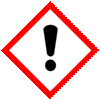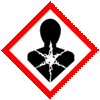 |
FInOrIC is the internationally preferred source for Chemicals for Hydraulic Fracturing including Ammonium Persulfate and Encapsulated Ammonium Persulfate. With customers in several countries and backed by owned full fledged chemical manufacturing facilities in Midland & Houston Area Texas with associated manufacturing sites in India, Dubai, China and USA we are a global chemical manufacturer & distributor. Fracturing and Fracking Industry can rely on our 24x7 - 365days deliveries. |




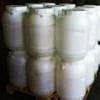
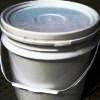
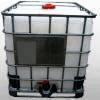
Ammonium Persulfate SDS of Suppliers Manufacturers
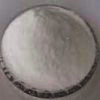
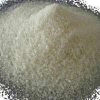
Specifications of Ammonium Persulfate Suppliers
Specifications of Encapsulated Ammonium Persulfate Suppliers
Ammonium Persulfate SDS, Safety Data Sheet
MSDS, Material Safety Data Sheet
1. Product & Company Identification
Product Name/Synonyms: Ammonium Persulfate; Ammonium Peroxydisulfate; Peroxydisulfuric Acid, Diammonium Salt; Diammonium peroxydisulfate
CAS No.: 7727-54-0
EINECS EC Number: 231-786-5
Molecular Weight: 228.20
Chemical Formula: (NH4)2S2O8
Recommended uses and uses advised against (if any): Oxidizer for Oil & Gas Wells and Industrial Use.
SUPPLIER
Company: Finoric LLC
Address: 8115 Loop 540, Beasley, Texas, 77417 USA
In case of emergency contact:
InfoTrac
USA: 1-800-535-5053
International: 352-323-3500
2. Hazards Identification
GHS, Globally Harmonized System Classification in accordance with 29 CFR 1910
Classification according to Regulation (EC) No 1272/2008
Acute toxicity - Oral Category 4, H302
Skin corrosion/irritation Category 2, H315
Serious eye damage/eye irritation Category 2A, H319
Respiratory sensitization Category 1
Skin sensitization Category 1, H317
Sensitisation, respiratory Category 1, H334
Specific target organ toxicity (single exposure) Category 3, H335
Oxidizing Solids Category 3, H272
Labeling according to GHS USA & Regulation (EC) No 1272/2008
| GHS Label Elements 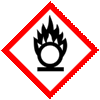 Oxidizing Solid |
GHS Label Elements |
GHS Label Elements |
Signal Word: Danger
Hazard Statements:
H272 - May intensify fire; oxidizer
H302 - Harmful if swallowed
H315 - Causes skin irritation
H317 - May cause an allergic skin reaction
H319 - Causes serious eye irritation
H334 - May cause allergy or asthma symptoms or breathing difficulties if inhaled
H335 - May cause respiratory irritation.
Precautionary Statements - Prevention
P210: Keep away from heat/sparks/open flames/hot surfaces. - No smoking.
P220: Keep/Store away from clothing/combustible materials
P221: Take any precaution to avoid mixing with combustibles
P261: Avoid breathing dust.
P264: Wash face, hands and any exposed skin thoroughly after handling
P270: Do not eat, drink or smoke when using this product
P271: Use only outdoors or in a well-ventilated area
P272: Contaminated work clothing should not be allowed out of the workplace.
P280: Wear protective gloves/ protective clothing/ eye protection/ face protection
P285: In case of inadequate ventilation wear respiratory protection
Precautionary Statements - Response
P301 + P312: IF SWALLOWED: Call a POISON CENTER or doctor if you feel unwell.
P302 + P352: IF ON SKIN: Wash with plenty of water.
P304 + P341: IF INHALED: If breathing is difficult, remove to fresh air and keep at rest in a position comfortable for breathing.
P305 + P351 + P338: IF IN EYES: Rinse cautiously with water for several minutes. Remove contact lenses, if present and easy to do. Continue rinsing.
P314: Get Medical advice/attention if you feel unwell.
P330: If swallowed, rinse mouth.
P333 + P313: If skin irritation or rash occurs: Get medical advice/ attention.
P337 + P313: If eye irritation persists: Get medical advice/ attention
P342 + P311: If experiencing respiratory symptoms: Call a POISON CENTER or doctor.
P362: Take off contaminated clothing and wash before reuse.
P370 + P378: In case of fire: Use water for extinction
Precautionary Statements - Storage
P402: Store in a dry place.
P403 + P233 - Store in a well-ventilated place. Keep container tightly closed
P501: Dispose of contents/container in accordance with local, regional, national, international regulations.
3. Composition/Information on Ingredients
Ingredient: Ammonium Persulfate or Ammonium Persulphate
CAS No.: 7727-54-0
EINECS EC Number: 231-786-5
Percent: 98 - 100%
4. First Aid Measures
Always seek medical attention after first aid measures are provided.
Inhalation: Remove to fresh air. If not breathing, give artificial respiration. If breathing is difficult, give oxygen. Get medical attention.
Ingestion: If swallowed, do not induce vomiting. Give large quantities of water. Never give anything by mouth to an unconscious person. Get medical attention immediately.
Skin Contact: In case of contact, immediately flush skin with plenty of water for at least 15 minutes while removing contaminated clothing and shoes. Cover the irritated skin with an emollient. Cold water may be used. Wash clothing & shoes before reuse. Get medical attention.
Eye Contact: Check for and remove any contact lenses. In case of contact, immediately flush eyes with plenty of water for at least 15 minutes. Cold water may be used. Get medical attention.
5. Fire Fighting Measures
Fire: Ammonium Persulfate is not combustible, but substance is a strong oxidizer and its heat of reaction with reducing agents or combustibles may cause ignition. Heating or contact with water releases oxygen which may intensify combustion in an existing fire.
Explosion: An explosion hazard when mixed with finely powdered organic matter, metal powder, or reducing agents.
Fire Extinguishing Media: Use water spray, alcohol-resistant foam, dry chemical or carbon dioxide. Use means suitable for extinguishing surrounding fire. Cool containers with flooding quantities of water until well after fire is out.
Special Information: In the event of a fire, wear full protective clothing and NIOSH-approved self-contained breathing apparatus with full face piece operated in the pressure demand or other positive pressure mode. Sealed containers may rupture when heated.
6. Accidental Release Measures
Personal precautions, protective equipment, environmental precautions and emergency procedures: It is an oxidizing material. Use appropriate tools to put the spilled solid in a convenient waste disposal container. Keep the substance damp using water spray. Do not touch spilled material. Prevent entry into sewers. Eliminate all ignition sources.
Methods and materials used for containment Cleanup procedures and Storage:
Small Spill: Use appropriate tools to put the spilled solid in a convenient waste disposal container.
Large Spill: It is an oxidizing material.
Stop leak if without risk. Avoid contact with a combustible material (wood, paper, oil, clothing...). Keep the substance damp using water spray. Do not touch spilled material. Prevent entry into sewers. Eliminate all ignition sources. Avoid penetration into waterways, sewers, soil, or groundwater. Local authorities should be advised if significant spillages cannot be contained.
7. Handling and Storage
Precautions for safe handling: Wear personal protective equipment. Avoid breathing dust. Handle product only in closed system or provide appropriate exhaust ventilation at machinery. Avoid contact with skin and eyes. Remove and wash contaminated clothing before re-use.
Conditions for safe storage, including any incompatibilities:
Keep Ammonium Persulfate in a tightly closed container, stored in a cool, dry, ventilated area. Protect against physical damage. Isolate from incompatible substances. Separate from combustibles, organic or other readily oxidizable materials. Avoid storage on wood floors. Containers of this material may be hazardous when empty since they retain product residues (dust, solids); observe all warnings and precautions listed for the product.
8. Exposure Controls/Personal Protection
Airborne Exposure Limits: - ACGIH Threshold Limit Value (TLV): 0.1 mg/m3 (TWA) as persulfate
Ventilation System: A system of local and/or general exhaust is recommended to keep employee exposures below the Airborne Exposure Limits. Local exhaust ventilation is generally preferred because it can control the emissions of the contaminant at its source, preventing dispersion of it into the general work area.
Personal Respirators (NIOSH Approved): For conditions of use where exposure to dust or mist is apparent and engineering controls are not feasible, a particulate respirator (NIOSH type N95 or better filters) may be worn. If oil particles (e.g. lubricants, cutting fluids, glycerin, etc.) are present, use a NIOSH type R or P filter. For emergencies or instances where the exposure levels are not known, use a full-face positive-pressure, air-supplied respirator. WARNING: Air-purifying respirators do not protect workers in oxygen-deficient atmospheres.
Skin Protection: Wear protective gloves and clean body-covering clothing.
Eye Protection: Use chemical safety goggles. Maintain eye wash fountain and quick-drench facilities in work area.
9. Physical and Chemical Properties
Appearance: Ammonium Persulphate is white crystals
Odor: Odorless
Odor threshold: Not available.
pH: Not available.
Relative density: 1.98
Melting point/freezing point: Not available.
Initial boiling point and boiling range: Not available.
Flash point: Not available.
Auto-ignition temperature: Not available.
Decomposition temperature: Not available.
Upper/lower flammability or explosive limits: Not available.
Vapor pressure: Not available.
Vapor density: Not available.
Evaporation rate: Not available.
Flammability (solid, gas): Not available.
Partition coefficient: n-octanol/water: Not available.
Solubility: 80 g/l00 ml water @ 25C (77F)
Viscosity: Not available.
10. Stability and Reactivity
Stability: Ammonium Persulphate is stable under ordinary conditions of use and storage. Stability decreases in the presence of moisture
Hazardous Decomposition Products: Decomposed by moisture to form oxygen and ozone. Burning may produce nitrogen oxides, sulfur oxides, and sulfuric acid. Oxygen is released which supports combustion.
Hazardous Polymerization: Will not occur
Incompatibilities: Reducing agents, organic material, sodium peroxide, water, and powdered metals, especially aluminum. Acids, Bases, Halides, Oxidizing agents, Strong reducing agents, Combustible materials.
Conditions to Avoid: Moisture, combustible materials, and incompatibles.
11. Toxicological Information
Oral rat LD50: 740 mg/kg
LD50 Dermal > 2000 mg/kg (rat) (Ammonium Persulfate)
LC50 Inhalation > 2.95 mg/L (rat) (4-hr) (Ammonium Persulfate)
Carcinogenicity: This product present at levels greater than or equal to 0.1% is identified as probable, possible or confirmed human carcinogen by IARC, NTP, ACGIH & OSHA.
Mutagenic Effects: Not available.
Teratogenic Effects: Not available.
Developmental Toxicity: Not available.
Reproductive Effects: No information available.
12. Ecological Information
Toxicity to fish: LC50 - Oncorhynchus mykiss (rainbow trout) - 76 mg/l - 96 h
Toxicity to daphnia and other aquatic invertebrates: EC50 - Daphnia magna (Water flea) - 120 mg/l - 48
Results of PBT and vPvB assessment: This substance/mixture contains no components considered to be either persistent, bioaccumulative and toxic (PBT), or very persistent and very bioaccumulative (vPvB) at levels of 0.1% or higher.
13. Disposal Considerations
Whatever cannot be saved for recovery or recycling should be handled as hazardous waste and sent to a RCRA approved waste facility. Processing use or contamination of this product may change the waste management options. State and local disposal regulations may differ from federal disposal regulations. Dispose of container and unused contents in accordance with law.
14. Transport Information
Domestic (Land, D.O.T. USA) & ADR/RID
Proper Shipping Name: AMMONIUM PERSULFATE
Hazard Class: 5.1; Packing Group: III
UN/NA: UN1444
International (Water, I.M.O.)
Proper Shipping Name: AMMONIUM PERSULPHATE
Hazard Class: 5.1; Packing Group: III
UN/NA: UN1444
15. Regulatory Information
USA:
SARA Section 302 Extremely Hazardous Substances: Does not have a TPQ.
Section 313:No chemicals are reportable under Section 313.
California No Significant Risk Level: None of the chemicals in this product are listed.
Section 16 - Additional Information
European Labeling in Accordance with EC Directives
H272 - May intensify fire; oxidizer.
H302 - Harmful if swallowed
H315 - Causes skin irritation.
H317 - May cause an allergic skin reaction.
H319 - Causes serious eye irritation.
H334 - May cause allergy or asthma symptoms or breathing difficulties if inhaled.
H335 - May cause respiratory irritation.
Classification according to EU Directives 67/548/EEC or 1999/45/EC:
Hazard Symbols:
O Oxidizing R 8
Xn Harmful R22
Xi Irritant R36/37/38; R42/43
Risk Phrases:
R 8 = Contact with combustible material may cause fire.
R22 = Harmful if swallowed.
R36/37/38 = Irritating to eyes, respiratory system and skin.
R42/43 May cause sensitization by inhalation and skin contact.
Other Information: Risk of decomposition by moisture, heat or by contact with incompatible materials.
Prepared by AJK on 29 May 2021
****************************
The information and recommendations set forth herein are presented in good faith and believed correct as of the date the SDS was created. It is compiled from various sources and it is not necessarily all inclusive nor fully adequate in every circumstance. In addition, these suggestions should not be confused with nor followed in violation of applicable laws, regulations, rules, or insurance requirements applicable. This SDS is intended only as a guide to the appropriate precautionary handling of the material by a professionally trained person using this product. Individuals receiving the information must exercise their independent judgment in determining its appropriateness for a particular purpose. This shall not constitute a guarantee for any specific product features and shall not establish a legally valid contractual relationship.
****************************
Ammonium Persulfate based Gel Breaker for Fracturing Fluid Manufacturers:
Finoric LLC
Houston & Midland, Texas, Oklahoma, and Chicago, Illinois, USA.
Tel: 1-855-346-6742 (1-855-FINORIC)
Email:
info@finoric.com
Copyright, Last updated: 27 January, 2022
